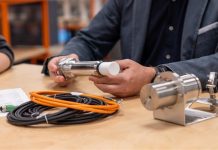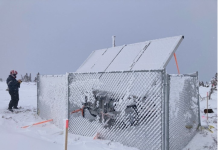Emerging innovation in wind power is addressing the need to improve existing technology while tackling the challenges of the new – including AI – according to the latest patent data analysis from intellectual property firm Appleyard Lees. The company’s newly-launched Inside Green Innovation: Progress Report Third Edition — which analyzes patent filings related to technologies developed to address several key environmental issues facing the world — reveals a change in wind direction for technologies underpinning the renewable energy source.
While traditional wind-turbine innovation as reflected by new patent applications has plateaued in recent years, there’s been a notable spike in innovation for floating wind turbines, though there is also evidence of new developments in remote maintenance for existing turbine technology.
“It’s clear that demand for wind-energy generation is growing, as is the amount of energy produced by wind-related technologies,” said Adam Tindall, Appleyard Lees partner and patent attorney. “And as artificial intelligence and machine learning are starting to feature in almost every aspect of life, the wind-energy sector is no different.”
The Global Wind Energy Council’s Global Wind Energy Report 2023 noted that total installed global capacity will reach 1 TW this year; the report projects this to reach 2 TW by the end of 2030, showing the evident increase in demand for wind energy. And, in the U.K., electricity generation from wind power increased by 715 percent from 2009 to 2021, with turnover from wind energy exceeding £6 billion.
Floating wind turbines have seen a steep rise in new patent applications, increasing from 1,061 in 2016 to 1,125 in 2021. However, despite a record-breaking year in 2021 for offshore wind energy, with 21.1 GW of capacity commissioned, only 57 MW came from floating wind technology, suggesting scope for further investment in innovation.
In the field of remote and automatic repair and monitoring of existing wind turbines, patent applications have seen peaks and troughs in the past decade but remained constant from 2020-2021. The need for safer working practices, both at height and in poor weather conditions, has encouraged innovation in, for example, drones and robots to replace direct human activity on turbines.
And the march of the machines is visible also in rising patent filings for AI-related technologies in wind power, including automatic blade adjustment, power distribution and construction methods.
“The comparatively low baseline of patent applications in both floating wind turbine and remote maintenance technologies suggests there are innovation and associated patent opportunities to harness in the area of wind power,” said Paul Beynon, patent attorney and senior associate. Companies active in wind-power innovation include GE, Siemens Gamesa, and Vestas – collectively accounting for most patent filings from 2018-2021. LM Wind Power, a company that supplied its first turbine blades to the Orkney Islands’ Windmatic turbine in the 1970s, filed its first wind energy patent in the past five years.
The Inside Green Innovation: Progress Report — Third Edition’s focus on wind energy was chosen because of its prominence in the global green innovation conversation, as referenced in the OECD’s and United Nations’ 17 Sustainable Development Goals and the World Intellectual Property Organization (WIPO) Green Innovation Database, a global innovation catalogue that connects needs for solving environmental or climate change problems with sustainable solutions.
More info appleyardlees.foleon.com/igipr3/inside-green-innovation-progress-report-third-edition



























